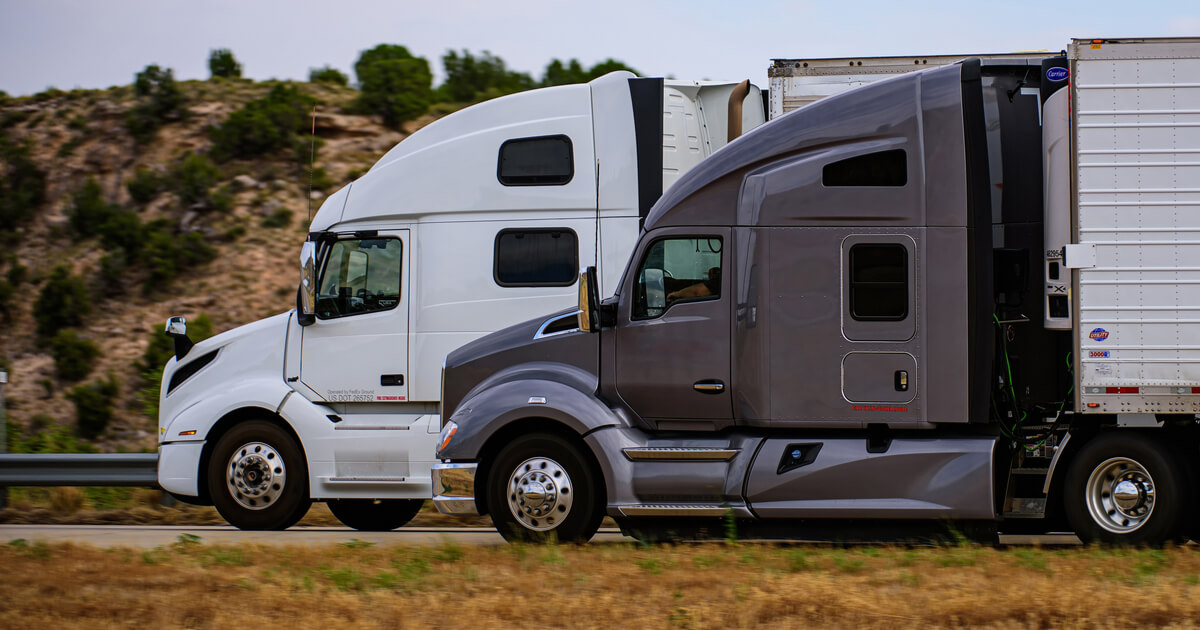
Battery electric semi-trucks have been making plenty of splashy headlines, with Nikola filling early orders and manufacturers such as Tesla and Navistar trying to carve out market share.
Despite the ballyhoo surrounding battery electric vehicles (BEVs), there are significant obstacles that could impede diesel truck fleets from transitioning over. California’s zero-emissions policy direction has companies ordering BEVS, even though the Golden State does not necessarily have the power grid to support more electric usage. Freight carriers might be wise to hedge their bets and consider renewable natural gas (RNG) and hydrogen engines.
Based in Coppell, Texas, Bolloré Logistics USA put its first RNG truck on the road in July to buoy its “sustainable logistics” presence. The outfit ended the summer with three RNGs and plans to onboard a fourth early next year. Its current trio is expected to pull upwards of 500,000 miles annually in the Lone Star state, reducing its carbon emission by 10 tons when compared to its diesel counterparts.
“As the need for sustainability continues to grow, having low carbon impact transportation plans becomes more critical for road freight. Bolloré Logistics is actively pushing with its partners to invest in more sustainable trucking solutions. We are very excited about our partnership with Jetco that will enable us to add four RNG trucks to our service offering,” Darian Smith, Hub Manager for the Coppell facility, reportedly said.
An RNG rig can reportedly traverse up to 325 miles without refueling. That range appears comparable to the Nikola Tre which has a maximum range of 350 miles. The critical differences are that many power grids across the country are not prepared to manage millions of Class 8 trucks, and electric passenger vehicles. RNG is generated from organic byproducts already available as livestock manure and other sources.
Utilizing RNG is a way to recycle energy already in the landscape. By contrast, electricity is produced by burning natural gas, coal, oil, and leveraging solar and wind. Even solar and wind add another layer of emissions during the lithium mining and manufacturing process. That is not necessarily the case with RNG.
Hydrogen engines also present a potentially more viable alternative to overloading American power grids. These engines utilize hydrogen without actually burning it. Instead, the energy source is simply converted into electricity. Like the BEV semi-trucks, hydrogen engines produce zero emissions and meet clean air mandates in states such as California. Volvo Trucks has a hydrogen tractor in the works that can reportedly manage over 600 miles without needing to refuel.
“We have been developing this technology for some years now, and it feels great to see the first trucks successfully running on the test track. The combination of battery electric and fuel cell electric will enable our customers to completely eliminate CO2 exhaust emissions from their trucks, no matter transport assignments,” Volvo Trucks president Roger Alm reportedly said. “Hydrogen-powered fuel cell electric trucks will be especially suitable for long distances and heavy, energy-demanding assignments. They could also be an option in countries where battery charging possibilities are limited.”
It may sound counterintuitive, but areas of the United States lack the bandwidth to handle the next wave of electric trucks and passenger vehicles. That may be why trucking industry leaders such as Werner Enterprises recently signed a letter of intent to purchase 500 Cummins 15-liter hydrogen internal combustion engines as soon as they are ready.
Electric vehicles that require charging stations may be popular right now. But straining grids and more frequent recharging stops will likely prove costly. RNGs and hydrogen engines could deliver solutions trendy BEVs currently cannot.
Sources: ajot.com, ttnews.com, chevron.com, ccjdigital.com, forbes.com











Leave a Comment